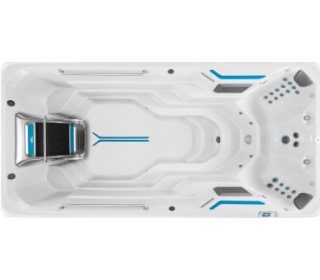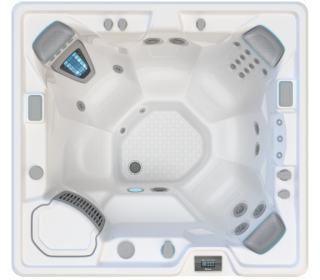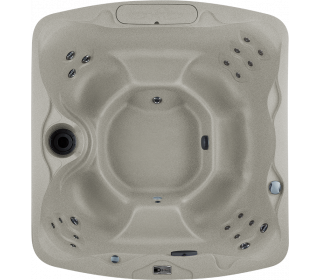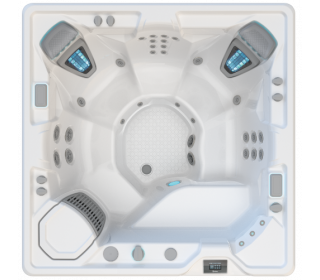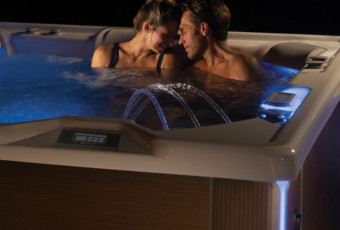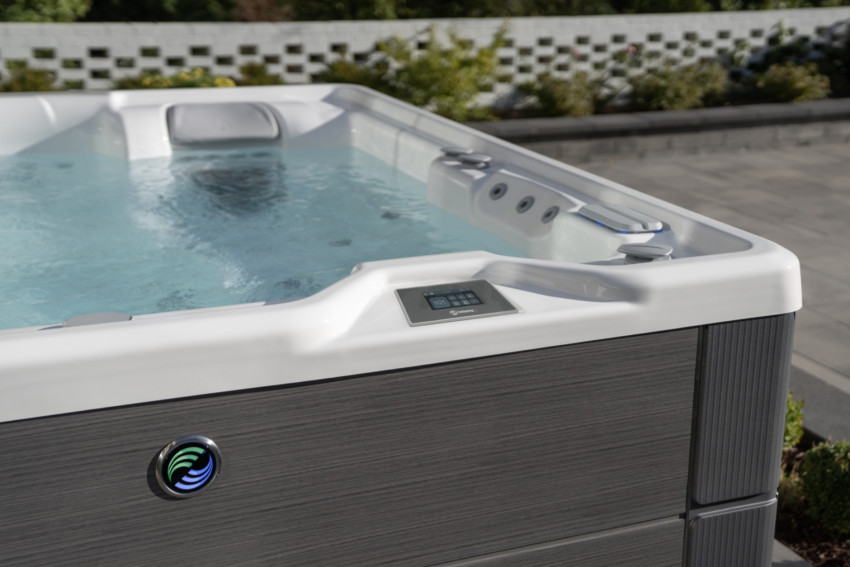In some ways spa pools are the essence of instant gratification. No trip to the day spa needed: water-based indulgence can be found right in your own backyard. But ‘instant gratification’ is a relative term - if you don’t use your spa pool regularly, the water temperature will fall. So how long does it take to heat up a spa pool?
The answer will depend on a wealth of factors. You need to consider the volume of the spa, the size and performance of the heater, the insulation, the spa cover, the prevailing weather and more. The time to heat up a spa can vary from 10-24 hours is common but a poorly built spa can take several days.
In this article we’ll take a closer look at each of those factors, to help you get a deeper understanding of exactly how long your spa pool will take to heat up.
Spa insulation
Outdoor spa pools are at the mercy of the elements, and the colder the ambient temperature , the longer the spa will take to heat. But the effects of air temperature can be limited if the spa pool is lined with high-quality insulation.
A high quality, fully insulated spa will prevent more heat from escaping, heating your spa pool faster and more cost-effectively and keeping it warmer for longer.
Spa cover
You should always cover your spa pool when not in use, particularly while you’re warming it up, as an open spa allows a huge amount of heat to escape. Insulated spa pool covers with hinged locks and tapered edges are best at retaining heat, as they let hardly any escape.
You should also check the condition of your spa pool cover regularly, as wear and tear can reduce its ability to retain heat. If your cover is damaged or waterlogged, replace it. The same applies to things like the water heater, circulation pump and filters. If these parts aren’t performing at their peak, the spa pool won’t heat up as quickly as it otherwise could.
Energy efficiency
As New Zealand's most energy efficient spa pool brand, we know a few things about saving you money. Finding an energy efficient spa pool not only ensures it heats up quickly, it also lowers running costs, as less power is needed to keep the water warm. Energy efficiency is achieved through a mix of innovative technology and the use of high quality parts and materials, so it’s wise to take a deep look into the history, reputation and reviews of a spa pool brand before committing to a purchase.
To learn more about spa pool energy efficiency, and to identify the most efficient spas, check out Hot Spring’s energy efficiency checklist.
Size of the spa pool
It makes sense that the more water there is to heat, the longer the process will take. While large spa pools such as our luxury 7 seater spa pool that will often feature larger heaters, you can still expect them to take longer to heat up. To get a better idea on the average cost of our models, check out our spa pool Energy Calculator.
Hot air induction jets
The jets are the crown jewels of any spa pool, adding relaxation and indulgence. And in a Hot Spring spa pool, you’ll also enjoy jets that use clever engineering to make the spa super energy efficient.
Our hot air induction jets are designed to increase the capacity of the spa to heat itself whenever the jets are in use. They do this by recycling the heat from the insulated equipment compartment and re-injecting it into the water through the jets, taking some of the strain off the heater..
If you want to heat your spa pool as quickly as possible, turn your jets on when you turn the heater on. As the water moves around, the heat will start to disperse evenly throughout the tub.
Should I leave the heater on?
What’s better: to turn the heater off after a soak, then warm the water back up next time, or to leave the heater on? The best choice will depend on where you live in New Zealand, how frequently you use the spa pool, and how efficient your insulation is.
The upfront investment in your spa pool will count for a lot. All Hot Spring spa pools are fully insulated, which means that they are able to retain more heat for longer than the average spa. What’s more, Hot Spring spa pools don’t use huge heaters and loud blowers to circulate spa water – the hot air-induction technology mentioned above heats water in a quieter and more energy efficient way.
In the Hot Spring Highlife and Limelight Collection the silent circulation pump also causes frictional heat which this heat energy is transferred into the spa water. This reduces the running costs of circulation by approximately half.
If you live in a cold climate area, like in the Southern Alps, and you use your spa pool regularly, it may be wise to keep your heater on all the time, but at a lower temperature when not in use. If your winters are mild, you could get away with turning your heater completely off when it isn’t in use, as it won’t take as long to heat up.
FAQ
Can I fill my spa pool with hot water so it won’t take as long to heat up?
What if you didn’t need to heat the water at all? What if you just poured hot water in? While it might sound like a smart move, you should never fill your spa with hot water, as doing so risks damaging the spa shell. Remember that your spa pool is only designed to heat water to a maximum temperature of around 40C, and temperatures higher than that can pose unnecessary risk.
You can however top up your spa pool with hot water, provided it’s at least half full already, as this disperses the heat of the water and reduces the likelihood of damage. You should never add water that is hotter than the spa pool's highest temperature setting, however.
How does the heater work?
Most spa pools are heated with an electrical immersion element similar to that found in home water heaters. Turning up the thermostat sends a message to the control system to adjust the heat, which it does after checking the flow, pressure and temperature of the water. Once that information is collected and analysed, a signal is sent to the element, which heats the water to whatever degree is needed. The water then warms up as it flows past the element.
Do I need a spa cover and a lifter?
As mentioned above, your spa cover is key to heating your water efficiently, as it keeps the warmth trapped in. But the process of removing and replacing the cover every time you want to use your spa can be a challenging one, as these covers can be awkward and cumbersome to move. This is particularly the case if you’re wanting to enjoy a solo soak.
Hot Spring spa pool cover lifters are designed to solve this problem. They make removing and replacing your spa pool cover a simple one-person job, they avoid the common damage that can happen to covers while they’re being moved, and they can even transform your cover into a privacy screen, helping you to avoid the prying eyes of neighbours!
How can I heat my hot tub faster?
The main way to ensure your spa pool heats quickly is to invest in a spa with super efficient insulation and a large, high quality heater. Aside from that, you should ensure your spa cover is on and tightly sealed.
Does a hot tub heat faster with jets on?
Whether or not a spa pool heats faster with the jets on will depend on the jets it has. Spa pools with traditional jets can take longer to heat when the jets are on, as those jets suck in ambient air temperature. This is always less than the set temperature of the spa - near zero in some cases.
But if your spa pool features Hot Spring hot air induction jets, it will heat faster when those jets are in use. This is because these jets recycle heat from the insulated equipment compartment that would otherwise go to waste. It is instead re-injected into the water through the jets. With this technology you can heat your spa pool sooner by turning your jets on when you turn the heater on. The moving water will then evenly disperse the reclaimed heat.
In summary
If you have a mid-range spa pool of an average size and live in a temperate climate, it will generally take around 10-24 hours to heat the water inside.
You can reduce the time it takes to heat your spa pool by choosing a high quality model and following the instructions above, such as keeping it covered, keeping the heater on a low setting when the spa is not in use, circulating the water and keeping an eye on the condition of the spa and cover.
If you’re ready to shop for the spa pool of your dreams, get in touch today or book a test soak with your local dealer.

















